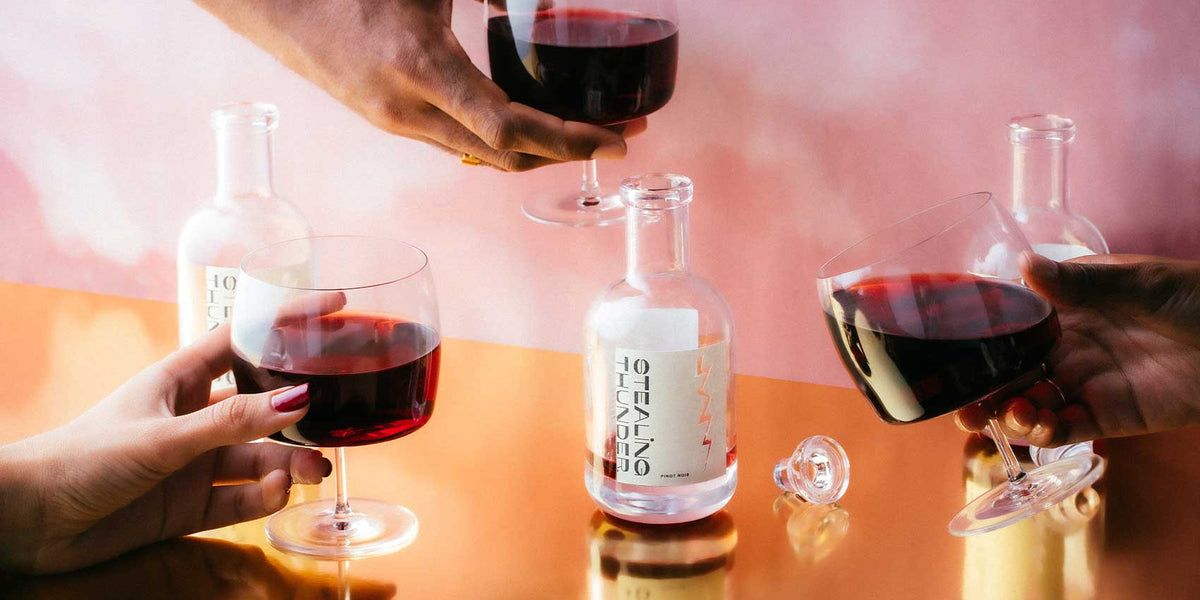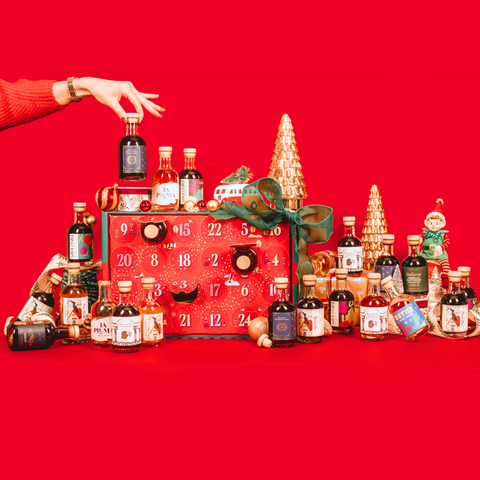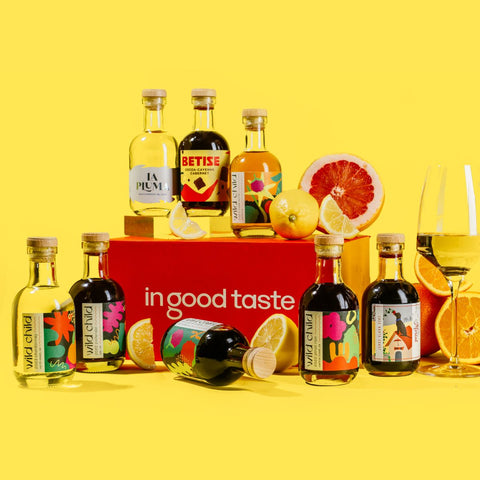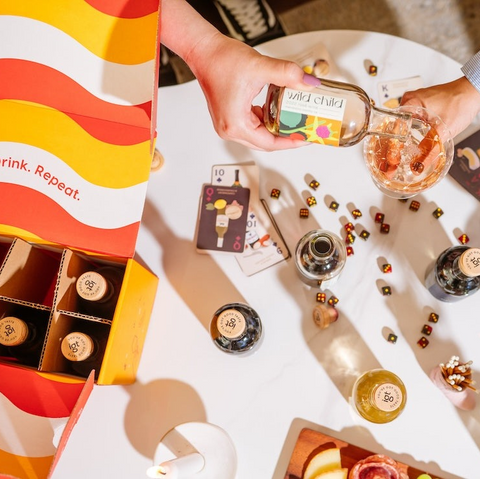The Basics of Red Wine
Wine is a complicated subject to understand, especially for those who are learning. Even walking into a wine shop can be intimidating. If you have ever traveled to a foreign country, you may remember looking around and thinking that nothing seems familiar. All of the signs are in another language, and the people seem strange and foreign. But then you spot something familiar, a mother laughing with her child or a group of teenagers gossiping on the street corner. Suddenly, you realize that the world is not strange at all. All you needed was a friendly face and something you recognized.
When learning about wine, you only need a few familiar faces and reference points to keep you from feeling lost and overwhelmed. How do you talk about red wine? How is it made, and how should it smell and taste? To know everything about red wine would take a lifetime, but the basics are simple enough for anyone to master. This article provides the answers.
Red Wine Production
The process of making red wine is not a complicated one. It consists of growing grapes, harvesting, fermenting, bottling, and aging. While the process itself seems simple, creating a truly exceptional one is another matter entirely.
The main difference between red and white wine is that red wine ages on the skins, while white wines are pressed before fermentation to remove them. As red wine ferments, the skins impart characteristics such as added tannins and acidity.
White Wine

Red Wine

You may have heard that white wine tends to have more sugar than red wine. Aging the wines on the skins is the reason. The yeast from the skins converts the natural sugars from the grapes into alcohol while the skin contact itself adds flavor, texture, and body. This first stage of fermentation is called alcoholic fermentation.
Occasionally, wines go through a second fermentation process. First, the skins and liquid are separated, which causes the strong-tasting malic acid to turn into a more mild lactic acid. The second fermentation, called malolactic fermentation, helps soften harsh wines and gives them more complexity. Malolactic fermentation is mostly reserved for red wine, although some whites like Chardonnay and Viognier also undergo this process. In most whites and rosés, the process would eliminate acidity and freshness.
What are Tannins?
When red wine is fermenting, the skins, seeds, and stems create tannins in the wine. Red wine contains more tannins than either white or rose wines. Different grape varietals produce distinct levels of tannins. Italy is known for producing some of the most tannic wines in the world, including Nebbiolo, Sangiovese, and Montepulciano.

Tannins make a wine taste dry and tart. Tannins are naturally occurring in wine and are a natural antioxidant. They are essential for aging wine because they attach to oxygen compounds and keep them from oxidizing.
To combat the dry feeling of tannins, you need fat. Fat softens tannins so that they do not overwhelm your palate. Tannins are one of the reasons wine and cheese are such a classic combination. Rich, fatty foods that contain lots of olive oil, butter, or even avocado pair well with tannic wines.
What is Acid?
The level of acid in wine depends on several factors. Unripe grapes have more acid than ripe ones. The longer a grape stays on the vine, the more sugars it develops. Wines from colder regions tend to make more acidic wines since the growing season is shorter. Tartaric acid helps winemakers in warmer regions balance out grapes that have spent too long on the vine. They add it to the grape juice before fermentation.
You taste acidity on the sides of your tongue. Like when you bite into a lemon, your whole face might pucker and your mouth with water involuntarily. The level of acidity in good red wines helps with the aging process. As the wine ages, the wine will taste less acidic, although the actual acidity level does not change. Acidity adds complexity and depth to the wine.
Acidity also helps wine pair well with certain foods. Acid cuts through fats and overly sweet foods, but it also pairs well with acidic foods. A classic pairing for the acidic red Chianti would be pasta with tomato sauce.
What is "Body" in a Wine?
When people talk about the body of a wine, they are talking about a couple of different factors: acidity, tannins, and alcohol level. You determine the body of a bottle of wine using all five senses: look, touch, scent, taste, and feel.
Light-bodied red wines are usually refreshing, crisp, and bright. While a light-bodied red will not linger long on your tongue, that is not to say that they do not have plenty of character. Acidity and fresh fruit are prevalent in light-bodied reds, and, therefore, they pair best with delicate foods like vegetables, shellfish, poultry, and fish.
Light-bodied reds tend to have fewer tannins and a lower ABV (below 12.5% percent). Examples include Gamay, Pinot Noir, and Grenache.
Medium-bodied red wines have varying levels of acidity, tannin, and alcohol. Typically they have an ABV between 12.5% and 13.5%. Medium-bodied wines tend to be popular because they pair with a variety of foods and are especially palatable.
Examples of medium-bodied red wines include Sangiovese, Cabernet Franc, Barbera, and Merlot.
Full-bodied red wines tend to be rich, muscular, and intense. Often full-bodied wines come from a warmer climate. The flavors last longer in your mouth and stand up to more flavorful foods like pasta with cream sauce and grilled steaks.
Heavy- or full-bodied reds often have lots of tannins and an ABV higher than 13.5%. Examples of full-bodied red wine types include Malbec, Cabernet Sauvignon, Mourvedre, and Syrah.
Types of Red Wine Grapes
While knowing the basics about acidity, tannins, and body will help you sound and feel more knowledgeable about wine, they are only the beginning. Knowing the most popular red wine grapes will make it easier for you to pick out a wine in a wine shop and provide a guide for choosing the right wine for every occasion.

Cabernet Franc
Tasting Notes: sour cherry, dried oregano, violets, blueberry, earth, black olive, coffee
Medium-bodied and slightly tannic, Cabernet Franc is well-known for its place as one of the three varietals in Bordeaux wine blends (alongside Cabernet Sauvignon and Merlot). However, Cabernet Franc can also make exceptional wines all on its own. When done well, the types of wine made from this black grape are a balance of earth, red fruit, and herbs.

Cabernet Sauvignon
Tasting Notes: bell pepper, green olive, herb, cassis, black cherry, tobacco, black pepper
Full-bodied and boozy, Cabernet Sauvignon is the most recognized varietal in the world. This familiar red forms another part of the Bordeaux wine blend. Cabernet Sauvignon blends well with many varietals, which is part of the reason it is so popular with winegrowers worldwide. Dry red wines made from Cabernet Sauvignon taste of red and black fruit combined with green and earthy notes like green bell pepper and tobacco.

Gamay
Tasting Notes: strawberry, raspberry, cherry, violet, lilac, cranberry
Light-bodied and bright, Gamay is the darling of the Beaujolais and Loire Valley regions in France. Wines made from the Gamay grape smell perfumy and floral, while their flavor is bright, fresh red fruits. Occasionally, winemakers use carbonic maceration to give Gamay wines a slight effervescence.

Grenache/Garnacha
Tasting Notes: cinnamon, cherry, violet
Medium-bodied and boozy, Grenache looks like a light-bodied red. However, the tannins and acidity weigh heavily on the tongue. Grenache requires a long growing season to reach its full potential and grows best in the wine-growing regions of Spain and southern France. It forms part of one of the world's most prestigious wine blends, Cotes du Rhone (alongside Mourvedre and Syrah), produced in the Rhone Valley. Wines made with Grenache are known for their spice and fruit.

Malbec
Tasting Notes: sour cherry, vanilla, tobacco, chocolate, oak, smoke
Full-bodied and deep purple, Malbec originated in France. This grape requires long, hot days to fully develop its signature rich fruit flavors of sour cherry and chocolate. Malbec is also present in small amounts in Bordeaux blends. It has also developed a reputation in South America, where it is often paired with grilled meats.

Merlot
Tasting Notes: strawberry, raspberry, blackberry, black cherry, plum, vanilla, mocha
Medium-bodied and easy to drink, Merlot is well-known for its versatility and approachability. Merlot goes with a variety of foods, a true middle-of-the-road varietal. Finding a quality Merlot used to be a challenge as the varietal was known for making watery and weak wines. When made well, this dry red wine often exhibits flavors of chocolate and raspberries.

Mourvèdre
Tasting Notes: blackberry, cherry, black pepper, rose, smoke, meat
Full-bodied and bold, Mourvedre is also known as Monastrell or Mataro depending on where it’s grown. Mourvedre usually has fairly powerful tannins, a high ABV, and a touch of sweetness. This meaty red wine usually exhibits flavors of cherry, smoke, and meat. Perfect for your next charcuterie board.

Nebbiolo
Tasting Notes: cherry, tar, raspberry, rose, anise, cranberry
Full-bodied but lightly colored, Nebbiolo is one of the oldest varietals in the world (dating back to the 13th century). The potent tannins make it the ideal wine for aging, and the acidity makes it the best red wine to drink with classic Italian dishes heavy with tomatoes or cream. Nebbiolo is known for its delicate aromas of violets and roses, as well as potent cherry and cranberry on the tongue.

Pinot Noir
Tasting Notes: cherry, blackberry, raspberry, mushroom, forest floor, vanilla
Light-bodied and fruity, Pinot Noir is known for its elegance and complexity. This wine varietal has fruit, flower, and spice notes, predominantly cherry, earth, and warming spices. Originally from France, Pinot Noir is increasingly popular among North American winemakers in both California and Washington. This versatile wine pairs well with turkey, chicken, duck, and mushrooms.

Sangiovese
Tasting Notes: cherry, tomato leaf, oregano, espresso
Medium-bodied and tannic, Sangiovese is Italy’s most-planted grape varietal. Typically, Sangiovese tastes of cherries and black stone fruit with subtle herbal undertones. The heavy tannins on this wine make it the best red wine to drink with braised meats.

Syrah/Shiraz
Tasting Notes: blueberry, blackberry, tobacco, plum, green peppercorn, clove
Full-bodied and meaty, Syrah tends to be intense, peppery, and savory, but it depends on the region. In France, Syrah makes some of the most complex and delicious savory expressions of the grape. In Australia, where the varietal has had great success, Syrah is called Shiraz and makes a notable version with plenty of ripe fruit notes. This dry red wine pairs well with game, mushrooms, and stews.

Zinfandel
Tasting Notes: peach jam, raspberry, blackberry, strawberry, raisin
Medium-bodied and sweet, Zinfandel is beloved for its high ABV and candied sweetness. The fruit in this grape expresses itself as jammy and intense. Unfortunately, these qualities have also given it a reputation for being cloying. This sweet red wine pairs well with the potent flavors of curries and barbecue.
To the novice wine taster, every wine is going to taste like fruit. All wine is fermented grape juice when it comes down to it. But certain methods and techniques bring out the character of each grape varietal, and those who are well-versed in wine can smell and taste the subtle differences of each grape. It takes practice, patience, and lots of wine! One of the best ways to learn about wine is to organize a wine tasting with your friends.
Ways to Serve Red Wine
Over the centuries, serving and drinking wine have both been turned into an art form. The glass, temperature, and way you drink it can all have subtle but significant influences on the experience. The proper tasting technique can reveal a lot of wine differences.
Glass: Red wine is best when served in glasses with large bowls. A large bowl means more air comes into contact with the wine as you drink it. More exposure to oxygen helps the more subtle tasting notes appear.

Temperature: Each wine is best when served at a certain temperature, depending on the levels of sugar, alcohol, and tannins. Light-bodied reds like Pinot Noir and Grenache are best chilled somewhere between 55-65 degrees. You can accomplish this by putting your bottle in the fridge an hour before opening it. Medium- and heavy-bodied reds are best when served between 60-68 degrees. As long as you store these wines in a cool, dark place, they should be ready to drink.
55-64°F
60-68°F
Adapted from the Wine and Spirit Education Trust
Tasting: Wine is made to be experienced with all five senses. The color and swirl, smell, taste, and texture all tell you something different. When you swirl the glass, it reveals the ABV. The color denotes both age and body. Smell and taste can give you clues to the varietal. The texture of the wine reveals acidity and texture, more clues to which varietal you are drinking and where it was grown.
As you learn and grow on your wine journey, you will notice more subtleties in each of your favorite wines.
Can All Red Wine be Aged?
Although many people believe that all red wine ages well, the truth is that 90% of red wine should be consumed within a few years of bottling. Some of the greatest wines in the world are best when you drink them young.
High levels of tannins and acidity preserve the wine and help the more delicate flavors of the grape appear. Without tannins or acidity, the wine will lose most of its flavor as the bright fruit character disintegrates with age.

If you are looking to try aging a couple of bottles, look for high-quality Cabernet Sauvignon, Merlot, Sangiovese, Monastrell, Cabernet Franc, Nebbiolo, Malbec, and Syrah. Check with the producer or look online to determine if your bottle is worth the wait.
Red Wine Education
The best-tasting red wine is the one that appeals most to you. If you are unsure of where to start, look for local wines that are popular near you. You know the terroir better than anyone and can begin to taste how location and climate can influence a wine. While learning the basics can be intimidating, the result is opening the door to a whole new world. Cheap or expensive, young or aged, light or heavy- there is a bottle of wine for every occasion.











